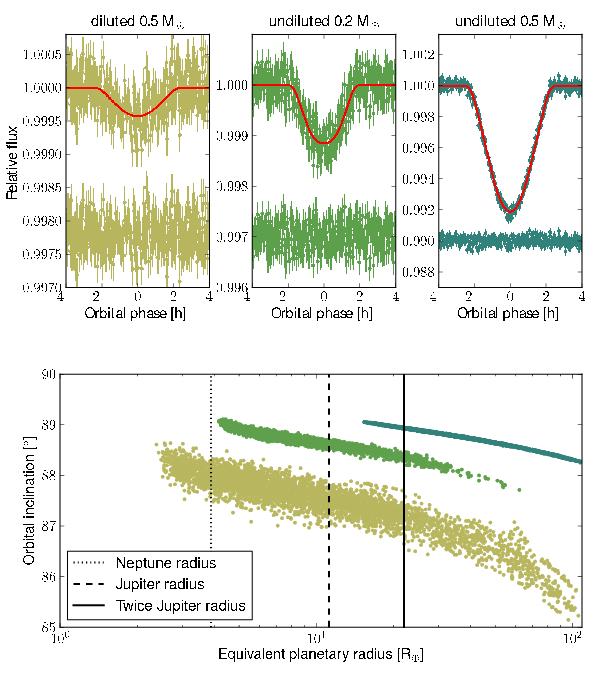Fig. 3

Top: synthetic Kepler light curve of secondary-only EB (as described in the text) with their best planetary model and residuals. From left to right, light curve are generated assuming the 1–0.5 M⊙ secondary-only EB diluted by a gravitationally bound 1 M⊙ star, the undiluted 1–0.2 M⊙ secondary-only EB and the undiluted 1 M⊙ –0.5 M⊙ secondary-only EB. Bottom: posterior distribution from the MCMC analysis of the aforementioned secondary-only EBs, displaying the correlation between the orbital inclination and the planetary radius (assuming a 1-R⊙ host). Colors and ranking from left to right are the same as for the upper plot. Vertical lines indicate the radius of Neptune (dotted line), the radius of Jupiter (dashed line), and twice the radius of Jupiter (solid line).
Current usage metrics show cumulative count of Article Views (full-text article views including HTML views, PDF and ePub downloads, according to the available data) and Abstracts Views on Vision4Press platform.
Data correspond to usage on the plateform after 2015. The current usage metrics is available 48-96 hours after online publication and is updated daily on week days.
Initial download of the metrics may take a while.




